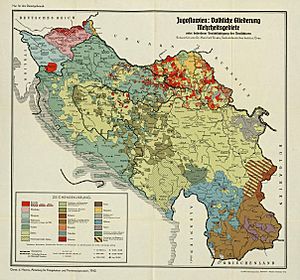Wends facts for kids
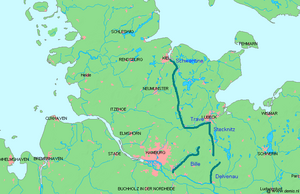
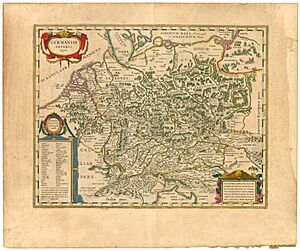
The Wends are a historical name for Slavs who lived close to Germanic areas. It's not about one single group of people. Instead, it refers to different peoples, tribes, or groups depending on the time and place. Today, communities who identify as Wendish live in Slovenia, Austria, Lusatia, the United States (like the Texas Wends), and Australia.
In German-speaking Europe during the Middle Ages, "Wends" often meant "Slavs." It was sometimes used for West Slavs and South Slavs living inside the Holy Roman Empire. The name might still be found in Finnic languages (like Finnish: Venäjä for modern Russia).
Contents
What Does "Wends" Mean?
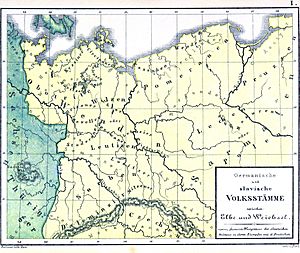
Some historians believe that Germanic peoples first used this name for the ancient Vistula Veneti. For Scandinavians in the Middle Ages, "Wends" (Vender) meant Slavs living along the southern coast of the Baltic Sea. This area was called Vendland. So, the term was used for Polabian Slavs like the Obotrites, Rugian Slavs, Veleti/Lutici, and Pomeranian tribes.
For people in the medieval Northern Holy Roman Empire, especially the Saxons, a Wend (Wende) was a Slav living west of the River Oder. This area was later called Germania Slavica. It was settled by Polabian Slav tribes in the north and by others like the Sorbs and Milceni further south.
Germans in the south used the term Winde instead of Wende. They used it for Slavs they met, such as the Slovenes. Names like Windic March still show this historical use.
After the 8th century, Frankish kings and their followers organized almost all Wendish lands into special border areas called marches. This led to a series of Crusades. By the 12th century, all Wendish lands were part of the Holy Roman Empire. During the Ostsiedlung (German eastward expansion) from the 12th to 14th centuries, Germans settled these lands and reorganized them.
Many Slavs west of the Oder adopted German culture and language. This happened because of assimilation after German settlement. Only some rural communities kept using West Slavic languages and were still called Wends. As these local Slavic languages slowly disappeared, the term Wends also faded away.
Some records say that in the 13th century, there were people called Wends or Vends as far north as Latvia. They lived near the city of Wenden. Henry of Livonia described a tribe called the Vindi in his 13th-century Latin book.
Today, only one group of Wends still exists: the Lusatian Sorbs in Eastern Germany. They also have communities in other parts of the world.
Ancient Veneti and the Wends
The name "Wends" comes from an ancient people called the Latin: Venetī or Venedī by the Romans. The Greek writer Ptolemy mentioned this group living on the Baltic coast.
History of the Wends
Early Times (500–1000 AD)
In the first thousand years AD, during the Slavic migrations, some West Slavs moved between the Rivers Elbe and Oder. They moved from east to west and from south to north. They mixed with the remaining Germanic people who had not left the area. Their German neighbors started calling these Slavs Wends, just as they had called the Venedi and perhaps the Vandals before.
When the Wends arrived in Germania Slavica, they were large groups. But they soon split into many small tribes. Big areas of forest often separated one tribe's settlement from another. Their tribal names came from local places. For example, the Heveller came from the Havel river. Settlements were protected by round forts made of wood and clay. These forts were used as safe places during raids or as military bases.
Some tribes joined together to form larger groups, like small duchies. The Obotrites, for example, formed from tribes in Holstein and Western Mecklenburg. They were led by powerful dukes known for raiding German Saxony. The Lutici were an alliance of tribes living between the Obotrites and Pomeranians. They did not have one duke but stayed independent. Their leaders met at the temple of Rethra.
In 983, many Wend tribes took part in a big uprising against the Holy Roman Empire. The Empire had set up Christian missions, German settlements, and German administrative areas in Wendish lands. The uprising was successful. It delayed Germanization for about 200 years.
Wends and Danes had early and ongoing contact. This included settlements, especially on the South Danish islands of Møn, Lolland, and Falster. These islands still have place-names of Wendish origin. There were also trading posts near Danish towns like Roskilde, which was once the capital. Danes and Wends also fought wars because of piracy and crusades.
Challenges and Changes (1000–1200 AD)
After their success in 983, the Wends faced more and more pressure from Germans, Danes, and Poles. The Poles invaded Pomerania several times. The Danes often raided the Baltic shores. In turn, the Wends often raided the Danes. The Holy Roman Empire and its leaders tried to get back their border areas.
In 1068/69, a German army captured and destroyed Rethra. This was one of the main pagan Wend temples. The Wendish religious center then moved to Cape Arkona. In 1124 and 1128, the Pomeranians and some Lutici were baptized (became Christian). In 1147, the Wend crusade took place in what is now north-eastern Germany.
However, this did not affect the Wendish people in today's Saxony. Here, Germans and Slavs lived together fairly peacefully. Wendish and German nobles also worked together closely.
In 1168, during the Northern Crusades, Denmark launched a crusade. Bishop Absalon and King Valdemar the Great led it against the Wends of Rugia. Their goal was to convert them to Christianity. The crusaders captured and destroyed Arkona. This was the Wendish temple-fortress. They tore down the statue of the Wendish god Svantevit. With the surrender of the Rugian Wends, the last independent pagan Wends were defeated by the Christian powers around them.
From the 12th to the 14th centuries, many Germanic settlers moved into the Wendish lands. This changed the area's culture from Slavic to Germanic. Local leaders and monasteries invited settlers to farm lands ruined by wars. They also wanted new farmlands from the large forests. These new farms used iron tools that had developed in Western Europe. At the same time, many new towns were created under German town law. This brought legally enforced markets, contracts, and property rights. These changes over two centuries were known as the Ostsiedlung (German eastward expansion). Some Germanic settlers moved beyond Wendish territory into Hungary, Bohemia, and Poland. They were generally welcomed for their farming and craft skills.
The Polabian language was spoken in parts of Lower Saxony and Brandenburg until about the 17th or 18th century. The German population absorbed most of the Wends. This means they disappeared as a separate ethnic group, except for the Sorbs. However, many place names and some family names in eastern Germany still show Wendish origins today. Also, the Dukes of Mecklenburg, of Rügen, and of Pomerania had Wendish ancestors.
Between 1540 and 1973, the kings of Sweden were officially called kings of the Swedes, the Goths, and the Wends. In Latin, this was kings of Suiones, Goths, and Vandals. In Swedish, it was Swedish: Svears, Götes och Wendes Konung. After the Danish monarch Queen Margrethe II stopped using these titles in 1972, the Swedish king, Carl XVI Gustaf, also chose to use only the title "King of Sweden" (Sveriges Konung). This ended a very old tradition.
From the Middle Ages, the kings of Denmark and Denmark–Norway used the titles King of the Wends (from 1362) and Goths (from the 12th century). They stopped using both titles in 1973.
Wendish Legacy Today
The Wendish people lived alongside German settlers for centuries. They slowly became part of the German-speaking culture.
The Golden Bull of 1356 was an important document for the German-Roman Empire. It said that the Empire was made of "diverse nations distinct in customs, manner of life, and in language." It also stated that the sons of the prince electors should learn Italian and Slavic (Wendish) languages from age seven.
Many place names in Central Germany and northern Germany come from Slavic origins. Typical Slavic endings include -itz, -itzsch, and -ow. You can find them in city names like Delitzsch and Rochlitz. Even names of big cities like Leipzig and Berlin are likely of Wendish origin.
Today, the only remaining minority group of Wendish origin are the Sorbs. They keep their traditional language and culture alive. They have cultural self-determination through the Domowina. The third minister president of Saxony, Stanislaw Tillich (2008–2017), is of Sorbian origin. He was the first head of a German federal state with an ethnic minority background.
The Texas Wends
In 1854, the Wends of Texas left Lusatia on the ship Ben Nevis. They were looking for more freedom. They settled an area in central Texas, mainly Serbin. The Wends succeeded and spread to places like Warda, Giddings, Austin, and Houston.
Today, families descended from the Wendish pioneers still value tradition, principles, and education. Thousands of Texans and other Americans, many not knowing their background, can trace their heritage back to the Wends.
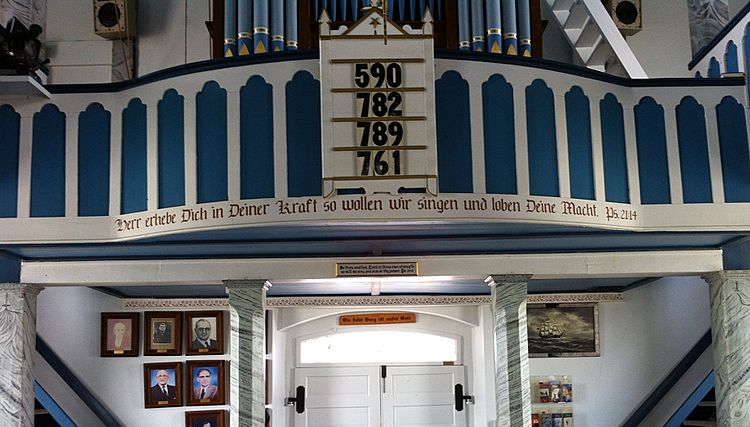
Other Uses of the Term "Wends"
Historically, the term "Wends" has also been used in other ways:
- Until the mid-19th century, German speakers often used Wenden to refer to Slovenes. This is seen in the name of the Windic March. This was a medieval territory in present-day Lower Carniola. Over time, the words windisch and Winde or Wende became insulting. The same happened with the Hungarian Slovenes, who were once called "Vends."
- It was also used to describe the Slovaks in German texts before about 1400.
- The German term "Windischland" was used in the Middle Ages for the historical Kingdom of Slavonia in Croatia. The terms Veneta, Wenden, Winden, and others were used for the westernmost Slavs in the 1st and 2nd centuries CE. This was a reference to the earlier tribes of Veneti.
See also
 In Spanish: Wendos para niños
In Spanish: Wendos para niños
- Sukow-Dziedzice group
- Northern March
- Limes Saxoniae
- Kashubians
- Drevani
- Wendland
- Slovincians
- Baltic Slavic piracy
- Sorbs
- Czech people
- Slovenes
- Wendish question


